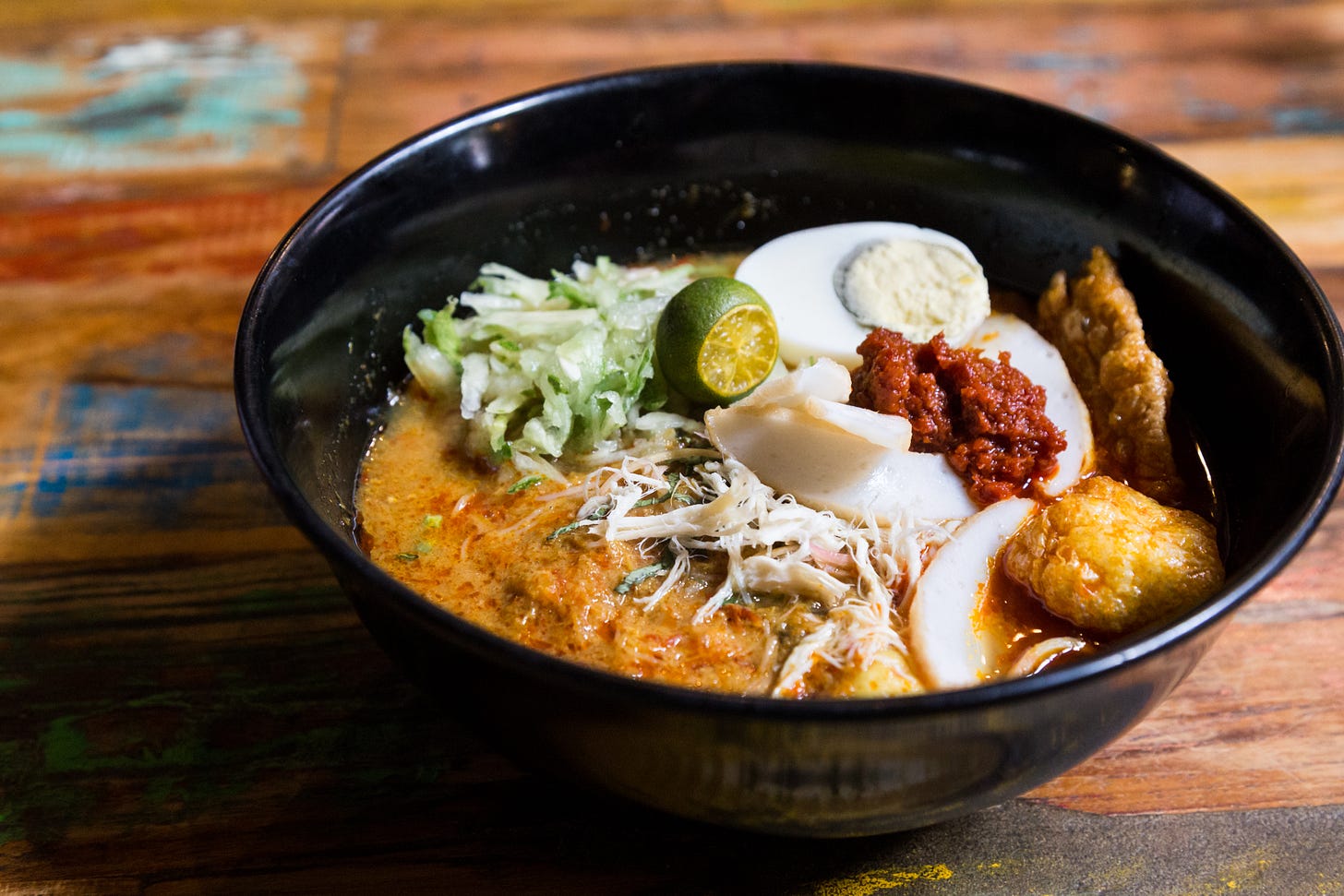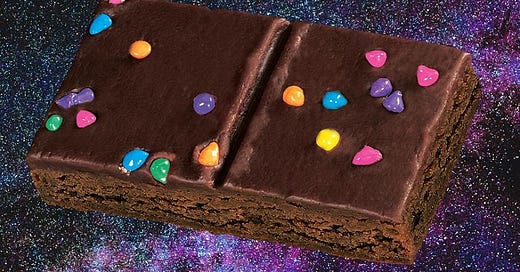Are we connected elsewhere? Say hi on: Instagram | Twitter | Facebook
Please forward Smart Mouth to your most culture-hungry friend!
I’ve never had a Little Debbie Cosmic Brownie, but reading the piece below still made me crave one. I feel like, as someone who grew up in the US, I know what it tastes like, because US junk food falls within certain flavor parameters.
What’s your favorite store-bought junk food? Let’s talk about it here.

Photo: Little Debbie
Memories of Debbie
Wading through my inbox one morning, I stumbled upon an email advertising nostalgic ‘90s treats. One line stuck: Cosmic Brownies, the lunchbox item of my youth (along with less exciting Fudge Brownies), had been resurrected before my eyes, a flashback happening in real time. I am not a millennial, and as I trudge toward my 40th birthday, which arrives this August, I find myself at a culinary crossroads. I grew up in the Lunchables Era, earned a palate in the CSA Era, and am hanging on for dear life with toddlers in the Pandemic Era. So what’s a generation-less, near-middle-aged person to do when the Cosmic Brownies come calling?
For me, and many like me, Little Debbie remains an unsullied American treasure. The company, which produces such prized items as the Oatmeal Creme Pie, Nutty Buddy, and Zebra Cake, was founded in 1928 in Tennessee by O.D. and Ruth McKee, a couple who sold baked items from their car. Eventually, the McKees opened a brick-and-mortar, and, after several moves and reincarnations, their company became the McKee Baking Company of Collegedale. Debbie was the name of the McKee’s granddaughter, and her image was rendered on the famed Little Debbie packaging by Atlanta artist Pearl Mann. That granddaughter is now the dessert icon of most every cellophane-clutching American child (and, fine, middle-aged snack lover, too).
There was no real choice, of course. I ordered the Cosmic Brownies. They were everything I remembered: fudgey on the outside, gooey, probably filled with ingredients that could embalm a frog. I didn’t care. I still don’t. They recalled the best part of school lunch, the only part I ever looked forward to: tearing into a wrapper after attempting to finish my mother’s wan attempt at whatever bad sandwich I tried to pawn off on my friend of the moment. Trying to make that brownie last, knowing the joy was so temporary. Ah. It still is. I don’t regret a single moment of my life spent wasted on Little Debbie Cosmic Brownies. Not now, and not then. 🍫

Photo: Candlenut
Young Peranakans Are Keeping Traditional Singaporean Food Alive
“Nyonya food is the proudest food culture,” says KF Seetoh, Singaporean street food guru and owner of hawker center Makansutra Gluttons Bay. Traditional Nyonya (also spelled Nonya), or Peranakan, food has been passed down to the descendants of Singapore’s first Straits Chinese immigrants.
As far back as the 15th century, Chinese immigrants moved to Peninsular Malaysia, which includes modern-day Singapore. Straits Chinese are the descendants of these Chinese immigrants who combine Chinese, Malaysian and some British and Dutch culture, dating back to the European colonization of Malaysia starting in the 1600s. “With our [Singapore’s] short history, not many cultures are formed, and it is remarkable that Straits Chinese culture is so nostalgic and unique. It’s a tradition worth keeping,” says Kevin Yap, the owner of Straits Chinese Restaurant. The third-generation Peranakan quit his job in IT to join the family business and continue serving the Nyonya food his grandfather has been making since 1953.
“Today you won’t find a lot of decent Nyonya restaurants, and only laksa is found commonly in hawker centers. It is not an easy cuisine to master, and every Peranakan will tell you their mummy’s version is the best,” says Seetoh.

Photo: Adobe Stock
What is Nyonya food? “It brings together the best of the Chinese and Malay culinary worlds - the unabashed rich, spicy flavors of Malay curries with simple, delicate Chinese dishes, such as pong tauhu soup (a seafood bisque with crab, tofu and prawn balls) and chap chye (a cabbage stew made with pork belly, mushrooms and vermicelli noodles in a prawn broth),” says chef Malcolm Lee.
While this 600-year-old culinary art form is rare, no young chef has done more to preserve it than Lee. When his restaurant Candlenut won a Michelin star, the only Peranakan restaurant in the world to do so, it brought Peranakan food to a much bigger audience.
At Candlenut, Lee and his team serve complex dishes like soft bone pork with buah keluak (an indigenous fruit) and ikan chuan chuan (cod covered in fermented soy bean and ginger sauce).
While neither Lee or Yap think Nyonya food is in danger of dying out, both say that modernization is the key to its longevity. “We try to keep true to our recipes, but perhaps using innovative ingredients to reach an even wider audience. We are using Impossible Meats for our Impossible nogh hiang (traditionally, a pork roll) to reach out to vegans,” says Yap.
“Many restaurants and bars are experimenting with ingredients that are typically only ubiquitous in Peranakan cuisine, like buah keluak and blue pea flower,” says Lee. “At the end of the day, while the dishes may not resemble what grandma used to cook, the essence of heritage cuisine remains.” 🇸🇬
This newsletter is edited by Katherine Spiers, host of the podcast Smart Mouth.
A TableCakes Production.
Want to contribute to this newsletter? Here are the submission guidelines.



